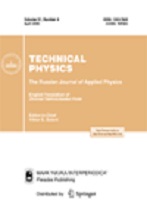|
This article is cited in 2 scientific papers (total in 2 papers)
Physical approaches and problems of data interpretation in the life sciences
Physical and physiological mechanisms of consciousness and general anesthesia (review)
K. M. Lebedinskiia, A. N. Kovalenkob
a North-Western State Medical University named after I.I. Mechnikov
b Ioffe Institute, St. Petersburg
Abstract:
General anesthesia (narcosis) is an induced, reversible inhibition of the central nervous system (CNS) with suppression of pain sensitivity, consciousness, motor, and vegetative activity during surgeries. The existing pharmacological theories provide no exhaustive explanation of the consciousness suppression mechanism, although mechanisms of other narcosis effects are well studied. The reason lies in the radical difference of the vertical construction scheme of CNS conduction pathways for organization of most of its perceptual and executive functions from the organization structures of the brain, which must be associated with processes of consciousness in information analysis and control command synthesis as a key synergetic factor of a self-organizing system. This makes it possible not only to explain the matter of phenomena of anesthesia through changing functional dynamic orderliness in the neural networks of the cerebral cortex, but also to control anesthesia depth and a patient's condition in general with methods of self-organization analysis by informational richness of their regulation signals, monitoring fractal dimension trend of an entropy attractor generated at the same time.
Keywords:
Anesthesia Depth, Informational Richness, Magnetic Entropy, Topical Diagnostics, Total Electrical Activity.
Received: 12.02.2018
Citation:
K. M. Lebedinskii, A. N. Kovalenko, “Physical and physiological mechanisms of consciousness and general anesthesia (review)”, Zhurnal Tekhnicheskoi Fiziki, 88:10 (2018), 1443–1456; Tech. Phys., 63:10 (2018), 1397–1409
Linking options:
https://www.mathnet.ru/eng/jtf5783 https://www.mathnet.ru/eng/jtf/v88/i10/p1443
|


|





 Contact us:
Contact us: Terms of Use
Terms of Use
 Registration to the website
Registration to the website Logotypes
Logotypes







 Citation in format
Citation in format 
